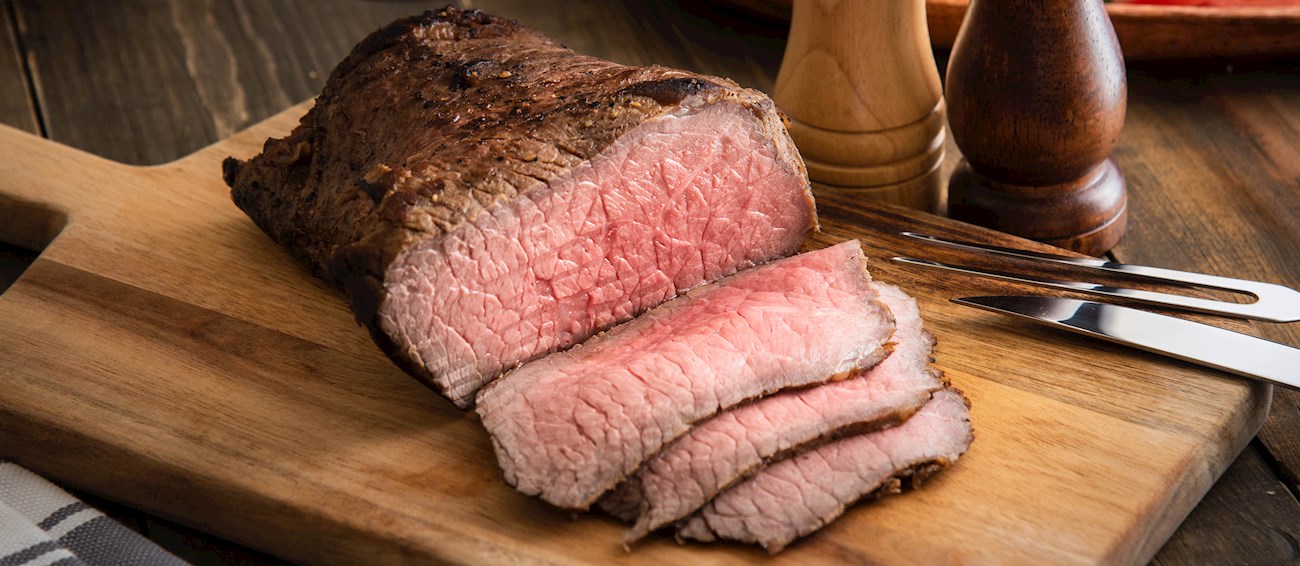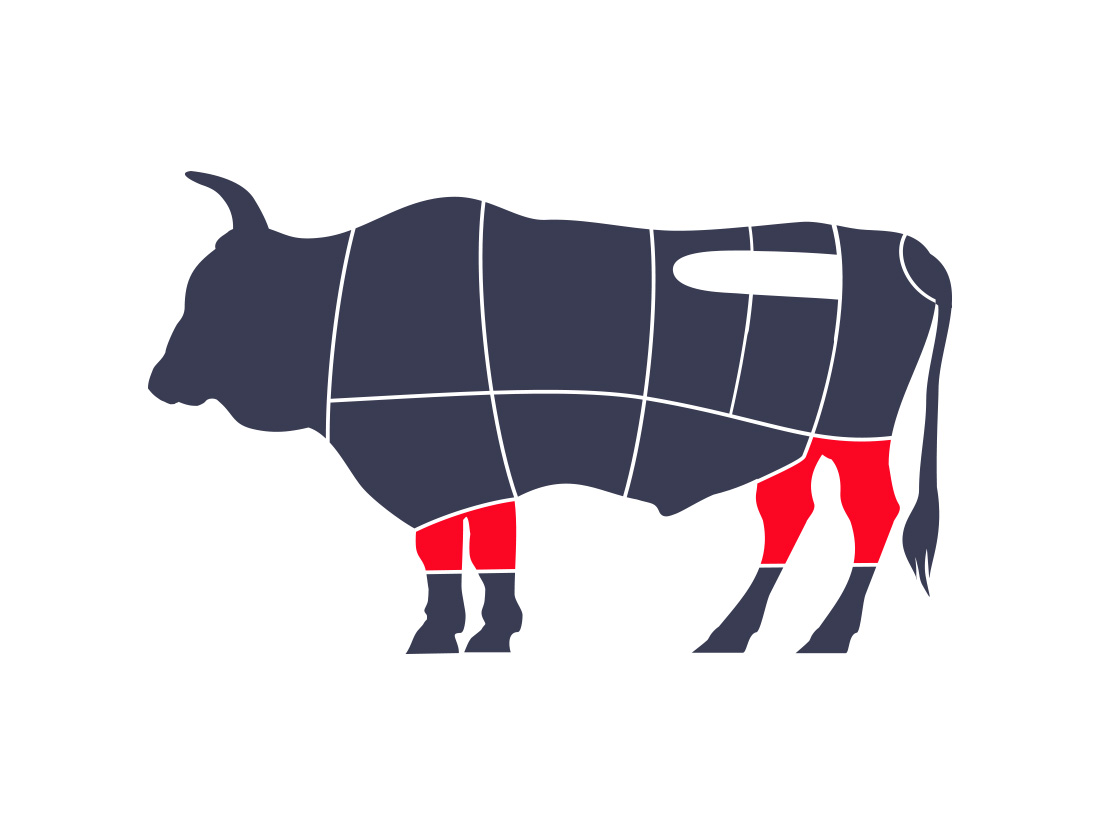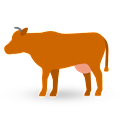MAIN INGREDIENTS
In the American, German, and Brazilian systems of primal beef cuts, the shank (hesse, músculo) is the term used for the leg portion of the cow. There are both front and hind shanks, coming from the legs of the steer. The shank is known to be one of the toughest cuts due to the fact that it comes from a part of the animal that is heavily exercised.
As such, it contains a high amount of connective tissue, which can be made tender and flavorful through slow, moist-heat cooking methods like braising. The meat from the shank is often used in dishes like soups and stews. Shank is also commonly used for making bone broths and stocks, as the bones from the shank contain marrow, which adds depth and richness to the liquid.
MAIN INGREDIENTS
In the American system of primal beef cuts, the round is the term used to describe the hindmost part of the cow. The round is made up of the rump and the hind legs, and it's a lean, somewhat tough cut because the leg and rump muscles are used for movement.
Despite its toughness, the round can yield some versatile cuts that are more affordable than the tender cuts from the front part of the animal. Here are a few specific cuts that come from the round. Like other tougher cuts of beef, the cuts from the round are often slow-cooked or braised to break down the connective tissue, or they're marinated and then cooked using high, dry heat methods like grilling or broiling.
MAIN INGREDIENTS
In the American system of primal beef cuts, chuck refers to the sub-primal cut from the front section of the cow's shoulder. It's one of the eight main divisions of the cow's body from which beef is cut, and it includes the neck, shoulder blade, and upper arm.
Chuck is often used for roasts because it has a good amount of collagen, which can break down during slow cooking and provide a rich flavor and tender texture. Chuck roasts, also known as pot roasts, are popular for slow-cooking methods like braising.
MAIN INGREDIENTS
Flat iron steak is a cut of beef that comes from the shoulder (or chuck) of the cow, specifically the top blade. The name "flat iron" is believed to come from the steak's shape, which somewhat resembles an old-fashioned flat iron. It's known for its rich flavor and tenderness, making it a popular choice for grilling and other cooking methods.
The flat iron steak is usually well-marbled, which contributes to its flavor and tenderness. However, it has a line of tough connective tissue running through the middle, which is typically removed by butchers to make the steak more palatable. This cut is praised for being relatively affordable compared to other premium cuts like ribeye or filet mignon.
TasteAtlas food rankings are based on the ratings of the TasteAtlas audience, with a series of mechanisms that recognize real users and that ignore bot, nationalist or local patriotic ratings, and give additional value to the ratings of users that the system recognizes as knowledgeable. TasteAtlas Rankings should not be seen as the final global conclusion about food. Their purpose is to promote excellent local foods, instill pride in traditional dishes, and arouse curiosity about dishes you haven’t tried.




